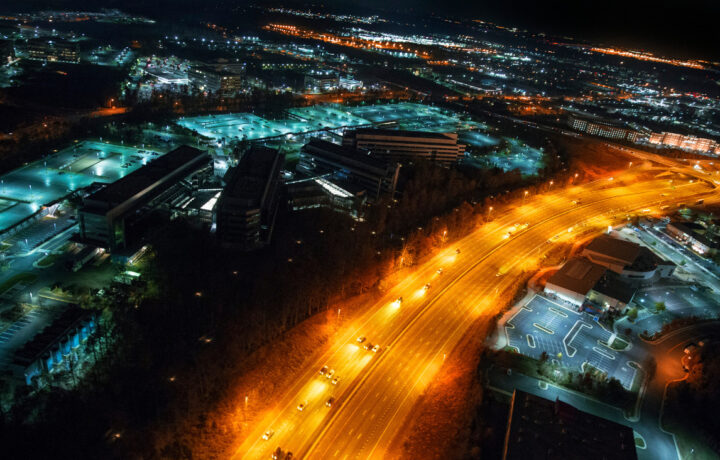The National Reconnaissance Office (NRO) has ambitious plans to upgrade its capabilities in the coming years, according to an official at the Chantilly, VA-based intelligence agency.
Within the next decade, the NRO expects to quadruple the number of satellites it has on orbit to increase the capacity and resilience of its constellations and improve the accuracy and timeliness of the information it collects, said Space Force Maj. Gen. Christopher Povak, the agency’s deputy director. “These satellites will deliver over 10 times as many signals and images that we’re collecting today,” Povak told the Mitchell Institute for Aerospace Studies on Oct. 10.
The NRO is also looking at how to achieve “responsive space,” or the ability to launch spacecraft quickly. “We want to be able to be prepared to launch a payload as soon as that payload is ready,” he said.
To diversify its launch options, the agency has expanded beyond its traditional sites, such as Cape Canaveral Space Force Station in Florida and Vandenberg Space Force Base in California, to include NASA’s Wallops Flight Facility in Virginia and Rocket Lab’s complex on Mahia Peninsula in New Zealand.
WORKING WITH SPACE FORCE
Povak highlighted some of the NRO’s recent activities, including the September launch with the Space Force of the Silent Barker system, which is designed to improve space domain awareness. “Silent Barker will give us indications and warnings to detect anything out of the norm, and enable us to figure out where our competitors are and their intent,” he said. “It will also help defend our assets in space and deter aggressions.”
Povak said the NRO and Space Force are partnered on several other efforts, including shaping the future of space-based moving target indicators, which will provide day, night, and all-weather detection and tracking of ground and maritime targets.
To possibly extend the life of its satellites on orbit, the NRO is monitoring government and industry efforts to develop the ability to refuel and repair such spacecraft. “As this continues to emerge and more capabilities come to the marketplace, I think the NRO would be willing and interested to see which of those potential opportunities would be beneficial for our missions,” Povak said.
The agency also intends to make greater use of automation to speed the delivery of data to its users and ease the work load on its analysts.
ATTRACTING EMPLOYEES
To improve recruiting, the NRO has updated its website, begun airing a series of videos about the agency on social media, and grown its internship program, Povak said. Its designation as a federal laboratory in September is expected to give it access to more resources in academia, industry, and the nonprofit sector.
The NRO, which employs about 3,000 people, develops, acquires, launches, and operates satellites that perform intelligence, surveillance, and reconnaissance. It was established as a classified agency in the U.S. Department of Defense in 1961, and its existence and mission were declassified in 1992. The NRO director reports to both the secretary of defense and the director of national intelligence.




